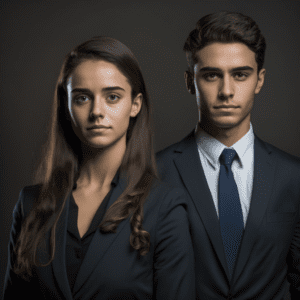
The world is close to a global definition of copyright for works generated by artificial intelligence, even if we may not have realized it yet.
A significant breakthrough occurred in China, where on Nov. 27, the Beijing District Court issued a ruling that provided legal protection to the author of a graphic work created using AI Stable Diffusion software. This decision is particularly noteworthy in the context of similar decisions made this year by various Copyright Offices and National Courts worldwide. These decisions have started to form a consistent approach to copyright for content created by generative AI applications.
The groundbreaking case of Kris Kashtanova and ‘Zarya of the Dawn’
Those who have been following developments in the field of generative artificial intelligence have encountered numerous difficulties in understanding the boundaries of copyright and protectability of creative works obtained with the assistance of AI, considering also the vigor of laws and regulations that pre-existed the spread of generative models.
The case of Kris Kashtanova and ‘Zarya of the Dawn’ is a prominent example. In early 2023, there was a significant development regarding the comic book ‘Zarya of the Dawn‘ and its registration with the U.S. Copyright Office. This comic book, known for being the first created with AI assistance (specifically, using Midjourney software), encountered a unique situation. In the United States, it was granted a hybrid copyright, protecting the comic book’s text and concept but not the individual AI-generated images.
Kashtanova’s argument centered on the originality of the graphic works, which she attributed to the use of ‘hundreds’ of prompts and numerous iterations to develop a unique digital artistic vision. However, the U.S. Copyright Office, supported by subsequent federal court rulings, clarified that the use of a tool like Midjourney does not confer copyright on the resulting images. Nevertheless, they upheld the principle that a work must exhibit ‘a sufficient amount of original authorship’ to be protectable, regardless of the medium used.
However, the principle was reaffirmed that a work, in order to be protectable, had to have a “sufficient amount of original authorship,” that is, provide, net of the medium used, a concrete authorial contribution.
In China, a country that has seen substantial development of the concept of Intellectual Property in recent years, a Beijing court came to a similar conclusion, albeit from a different perspective. In a notable case, the Beijing Internet Court recognized the copyright of an AI-generated image in a dispute involving Mr. Li, who used Stable Diffusion software to create the contested images. The defendant, a blogger, had used one of Li’s AI-generated images in an online article, sparking the legal dispute.
The Beijing Court’s decision focused on Li’s ‘certain degree of intellectual investment’ in selecting the prompts and setting the parameters for the image creation. The court noted that the ‘originality’ of the image lay in the choices Li made in adjusting the parameters to reflect his ‘aesthetic choice and personalized judgment.’
The Beijing Court’s recent decision
The Beijing Tribunal observed that Li had “made a certain degree of intellectual investment” in the selection of the request texts, the so-called prompts, as well as in setting the parameters and designing the presentation. The “originality” of the image, as the Tribunal stated, thus consists of the selections by which Li repeatedly adjusted the parameters to achieve an image that reflected his “aesthetic choice and personalized judgment.”
The intricacy of the prompt used by Li thus played a key role in the court’s decision. The request included elements, written in English and which we quote for the convenience of reading in Italian, such as “high-quality, high-detail color RAW photo, idol of Japan, highly detailed symmetrical attractive face, dreamy black eyes, reddish-brown hairi,” as well as negative indications to exclude undesirable features such as “3d, render, cg, painting, drawing, cartoon, anime, comic.”
In the context of generative AI, Midjourney offers fewer customization options compared to Stable Diffusion, which operates more like an advanced raw camera with extensive parameter settings. This difference is crucial in understanding why, under a similar global principle, certain works might be granted copyright protection while others might not, depending on the generative models used
Global Copyright for Copyright AI-Generated Art
Regarding global copyright principles for AI-generated art, a general rule is emerging, also considering the current and prospective EU regulatory framework: an AI-generated work of art must contain a substantial amount of intellectual effort by the author to qualify for copyright protection.
Is this conclusion questionable? Certainly, as it raises questions about how similar prompts may lead to substantially different results or how detailed the prompts should be to make the application of this general rule applicable in individual cases.
After the first year of widespread global use of generative AI software, we can infer general guidelines and formulate a comprehensive approach for requesting copyright recognition for works created with the aid of generative AI models.
Generative AI and Copyright in Text and Large Language Models
While the discussion thus far primarily pertains to visual generative art, similar principles may apply to AI-generated textual content, like that produced by language models such as ChatGPT by OpenAI. Here again, the human element, including the specificity of the prompts and the user-provided context, plays a crucial role in determining the originality and potential protectability of the content.
On the other hand, in linguistic models, it is still difficult to discern whether a text has been artificially generated or not; consequently, the practical issue of having to prove authorship of a textual work of authorship, in terms of application and Copyright recognition, might hinge differently in jurisprudential developments.
In the case of textual works avowedly generated by AI, the sequence of prompts, rather than the prompt single, might indeed play an important role in determining the “copyrightability” of a work but also the inherent complexity of the creative process.
In areas like journalistic or literary copyrighting, the style of output from AI models such as ChatGPT or Bard is heavily influenced by the initial prompt, which is often more elaborate than those used in graphics. This complexity adds to the challenge of determining how much of the textual content was genuinely ‘created’ by the human author versus the AI.
Determining the extent of human creative contribution in a textual work after the fact, and therefore its protectability, is a delicate task.
Assessing copyright on such works requires a thorough examination of the creative process, taking into account not just the final text but also the level of specificity and complexity of the prompts provided by the user, as well as any iterations and modifications made to the AI-generated content.



